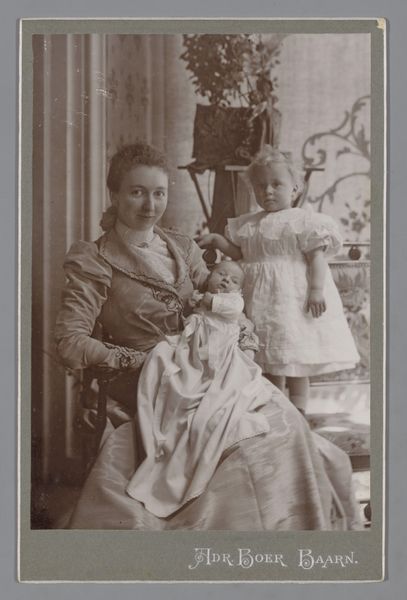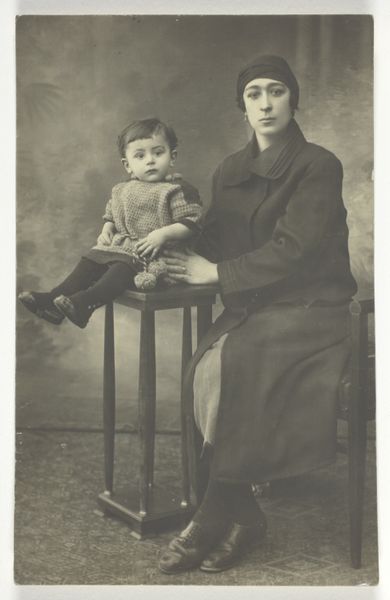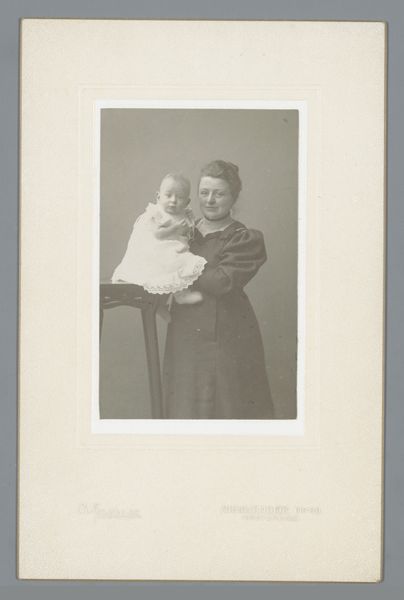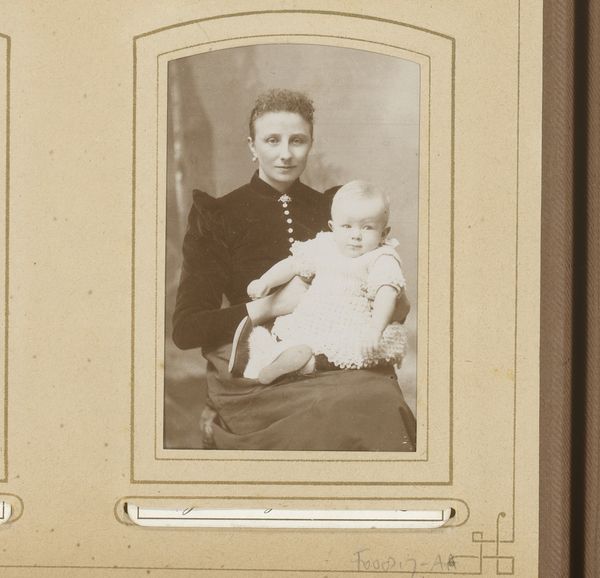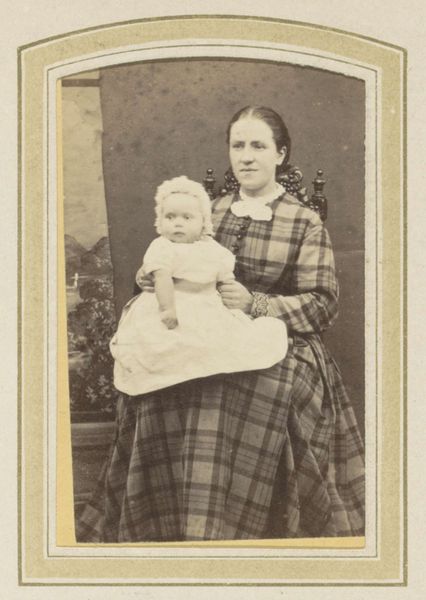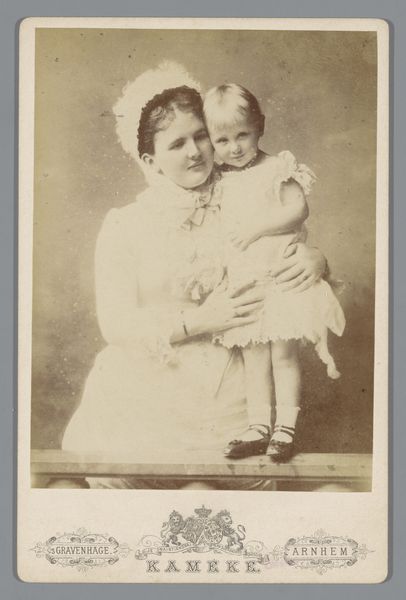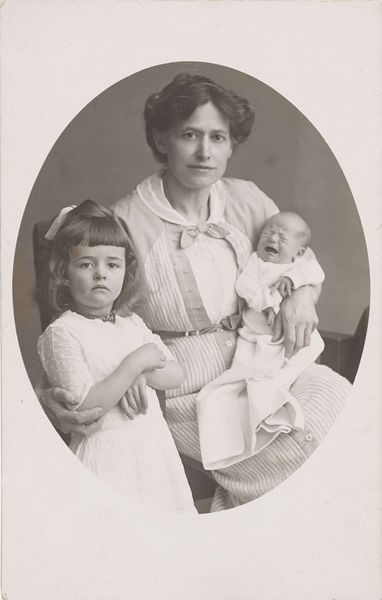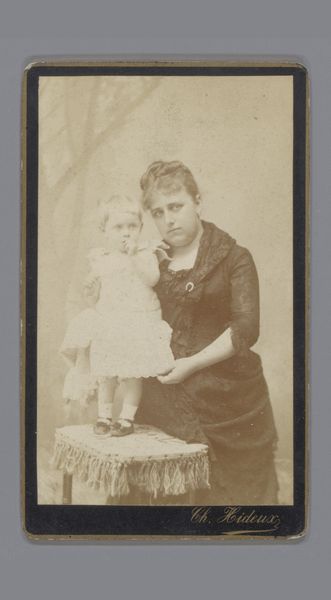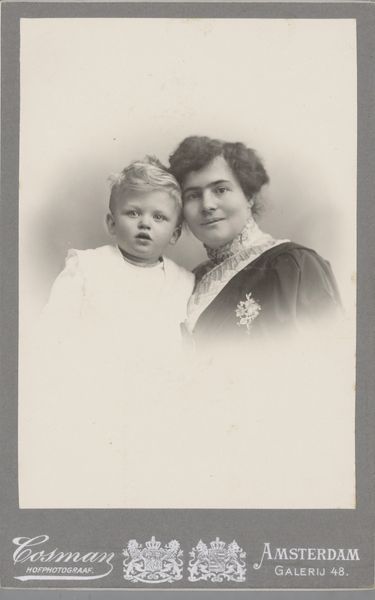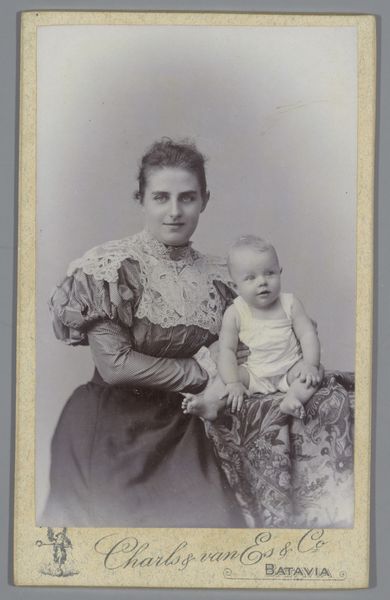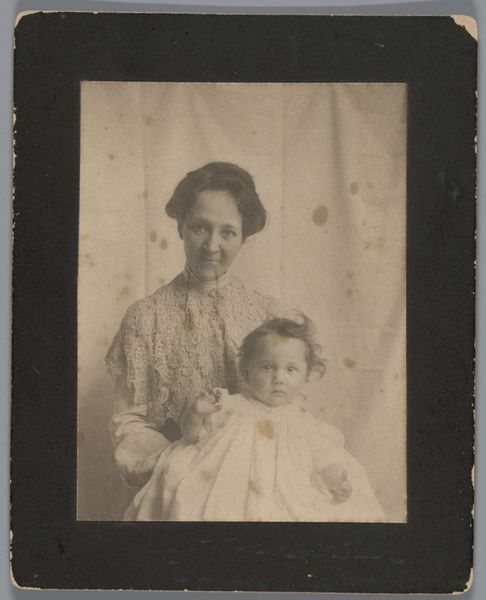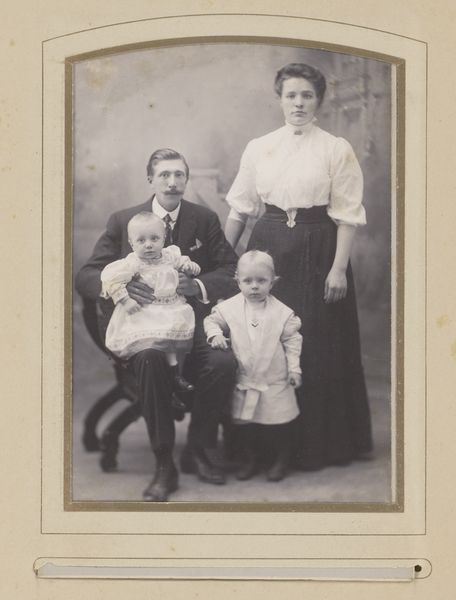
Portret van een onbekende vrouw en haar dochter met een ingevoegd portret van een onbekende man c. 1910 - 1925
0:00
0:00
paper, photography, gelatin-silver-print
#
portrait
#
print photography
#
paper
#
photography
#
historical photography
#
gelatin-silver-print
Dimensions: height 139 mm, width 87 mm
Copyright: Rijks Museum: Open Domain
Curator: Here we have a gelatin-silver print from circa 1910-1925 titled "Portret van een onbekende vrouw en haar dochter met een ingevoegd portret van een onbekende man," which translates to “Portrait of an unknown woman and her daughter with an inserted portrait of an unknown man." Editor: There’s something immediately haunting about this piece. The way the figures are arranged, the contrasting crispness... it gives the impression of a family grappling with absence. Curator: It's intriguing how the man is presented almost ethereally, as a separate, 'inserted' image looming behind the others. This suggests the social roles of men within a family structure, as provider or patriarch but here he remains just out of reach. Editor: I see a visual metaphor for memory itself. He's there, but distant, idealized perhaps. The photograph flattens reality, presenting a unified, if ultimately fragmented, image of the family unit. He’s set higher than they are in the composition, which also signifies dominance, maybe an idea about the man being ‘above’ women in the early twentieth century? Curator: Definitely a poignant reading. Also consider how photography became a widely accessible means of memorialization around this time. The portrait holds particular cultural weight, especially when depicting a figure whose presence is otherwise lost to time. The mother is sitting tall on the chair with jewelry indicating financial stability for the family, at least at the time of the image. The daughter also has jewelry and is dressed in finery; however, all are cast in grayscale. Editor: And it reinforces my idea of memory because this portrait can stand as a symbol, it reminds people of their collective familial or other type of histories; photographs like this become family heirlooms. They’re invested with meaning far beyond their surface representation. I see how these specific people carry the burden of those memories. Curator: So very true. The choice of imagery does, in a way, dictate the viewer's emotional experience and guides them to build meanings from cultural symbols. It’s also powerful to note that all are looking straight forward toward the viewer, including the ghostly father, as though waiting for the moment, a specific date and time when we, the viewer, finally stop and observe them. Editor: Absolutely. And looking at it again, one gets the sense that those memories are bittersweet, tinged with both love and a subtle melancholy. What an evocative representation of early twentieth century family dynamics!
Comments
No comments
Be the first to comment and join the conversation on the ultimate creative platform.

